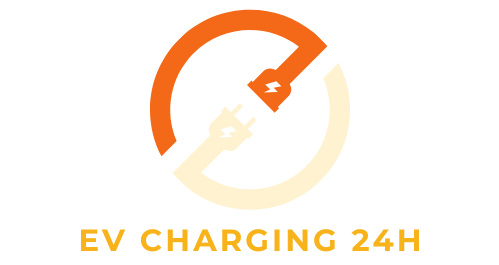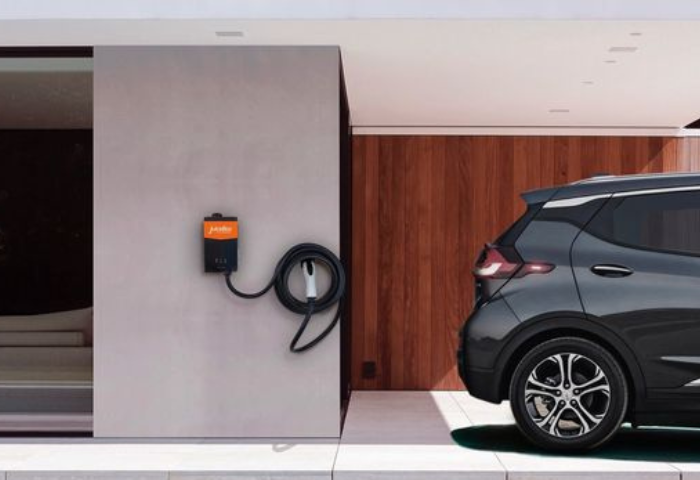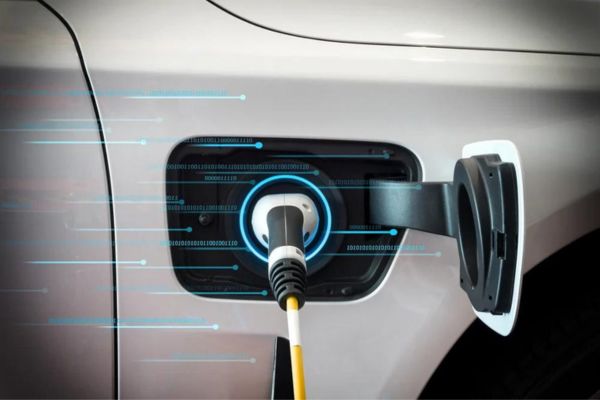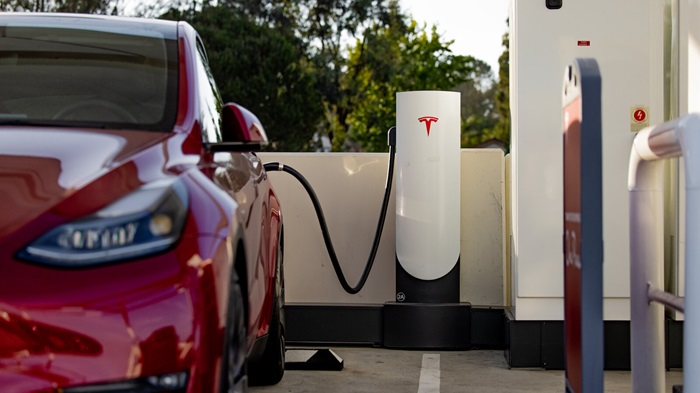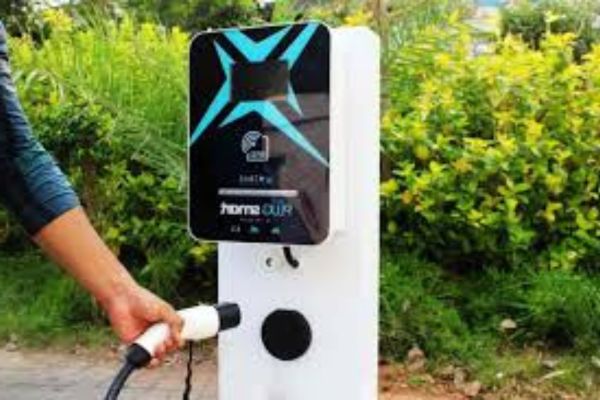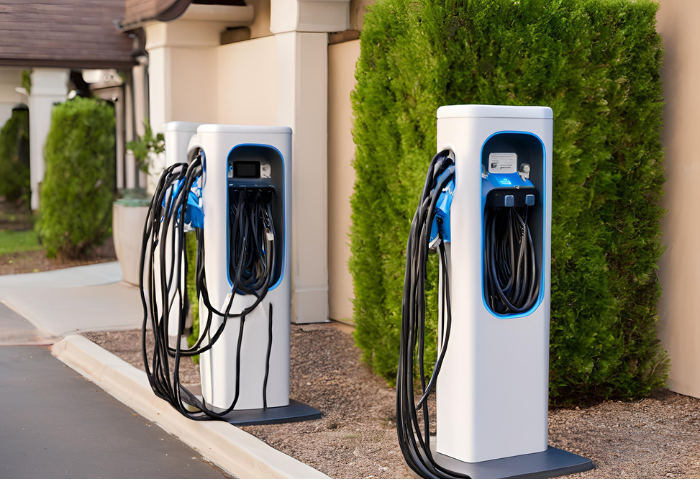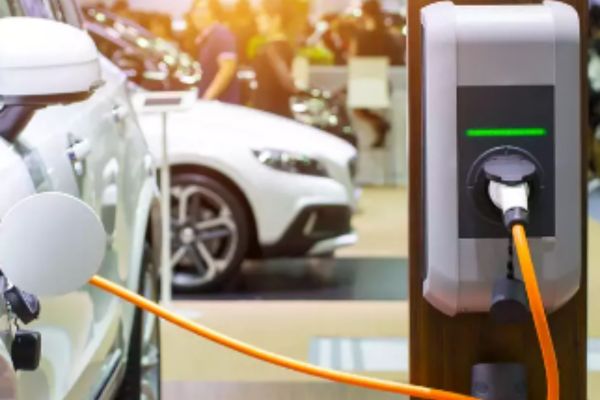Harness the Sun: Top Smart EV Chargers with Solar Integration for 2024
Solar technology’s integration into the smart EV charger market is revolutionizing the powering of electric vehicles. By harnessing solar energy, these chargers offer a sustainable and cost-effective solution for EV owners looking to reduce their carbon footprint and reliance on traditional energy sources.
Advances in solar panel efficiency and battery storage capacity have made it simpler than ever to charge vehicles with renewable energy, which is driving the growing popularity of smart solar EV chargers. This shift not only supports environmental sustainability but also aligns with global trends towards cleaner, smarter energy solutions.
As we delve into the nuances of smart solar EV chargers, it becomes evident that they are key components in the push towards greener transportation technologies.
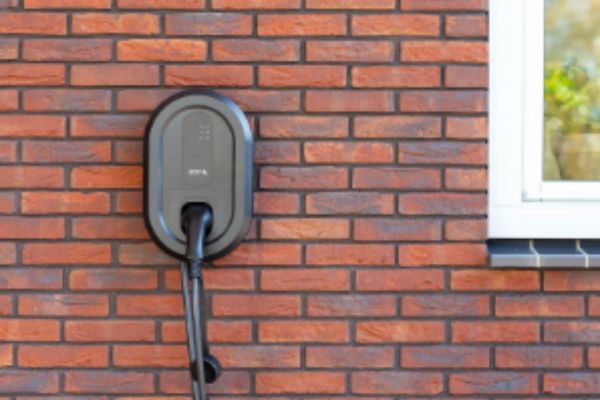
An Introduction to Solar EV Charging
Overview of Solar EV Charging
Solar EV charging refers to the use of solar energy to power electric vehicles (EVs). This innovative approach combines the benefits of renewable energy with the growing adoption of electric vehicles, providing a sustainable and eco-friendly solution for transportation.
Solar EV charging stations harness the sun’s power to generate electricity for EV charging, thereby reducing reliance on fossil fuels and reducing greenhouse gas emissions.
Unlock the Power of Solar
Solar energy is one of the most abundant and clean sources of energy available. By leveraging this resource, we can significantly reduce our environmental impact and move towards a more sustainable future. Solar EV charging systems typically consist of solar panels, an inverter, and a battery storage system.
EVs receive their charge from the solar panels, which convert sunlight into electricity. Batteries can store any excess energy for later use or feed it back into the grid.
Green energy and grid energy
It is possible to design solar EV charging systems to function in tandem with the grid. This hybrid approach guarantees the ability to charge EVs even in the absence of sunlight, such as during nighttime or cloudy days.
The solar panels generate electricity during peak sunlight hours to charge the vehicles. We can draw additional power from the grid if necessary. On the other hand, if the solar panels generate more electricity than required, they can feed the excess back into the grid, thereby enhancing the overall energy supply.
100% green energy
Solar EV charging can operate entirely on solar energy for those committed to fully sustainable practices. This setup involves installing a sufficient number of solar panels and an adequate battery storage system to meet the energy demands of EV charging around the clock.
By relying solely on solar power, users can achieve 100% green energy, making a substantial contribution to environmental conservation and reducing their carbon footprint to a minimum.
Environmental Benefits
Carbon footprint reduction
One of the most significant benefits of solar EV charging is the reduction in carbon footprint. Traditional vehicles powered by gasoline or diesel emit a considerable amount of carbon dioxide and other harmful pollutants. In contrast, electric vehicles charged with solar energy produce zero emissions during operation.
By using solar energy to charge EVs, we can significantly cut down on the greenhouse gases released into the atmosphere, helping to combat climate change and improve air quality.
The impact on reducing dependence on non-renewable energy sources is significant.
Solar EV charging also plays a crucial role in reducing our dependency on non-renewable energy sources such as coal, oil, and natural gas. These fossil fuels are finite resources, and their extraction and use have detrimental effects on the environment.
By transitioning to solar energy for EV charging, we can decrease our reliance on these harmful energy sources, promoting a more sustainable and resilient energy system. This shift not only helps preserve natural resources but also fosters energy independence and security.
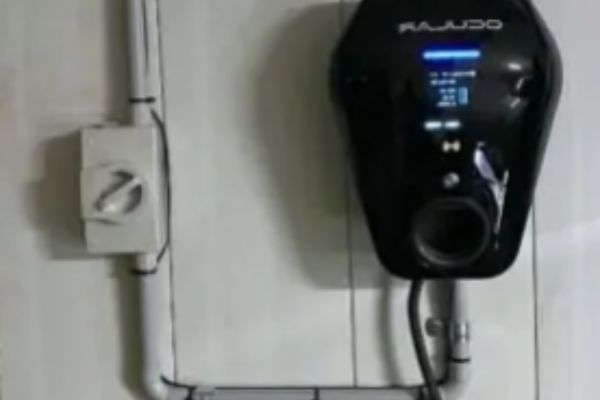
Technical Aspects and Product Features
SolarEdge Smart EV Chargers
Descriptions and Features
By seamlessly integrating with solar power systems, SolarEdge Smart EV Chargers offer an efficient and sustainable method of charging electric vehicles (EVs). These chargers combine innovative technology with practical design to deliver high-performance charging solutions for eco-conscious consumers.
Key Features:
- Seamless Integration: SolarEdge chargers work in harmony with solar panels and home energy management systems, offering a cohesive and efficient charging experience.
- Smart Energy Management: The chargers prioritize solar energy for EV charging whenever possible by using intelligent software to optimize energy use.
- User-Friendly Interface: Equipped with intuitive controls and monitoring capabilities, users can easily manage and track their charging sessions via a mobile app or web interface.
- Fast Charging: Designed to provide high-speed charging for EVs, these chargers reduce the time required to recharge, making them convenient for everyday use.
Unified Power Solution: PV + EV
The SolarEdge Smart EV Charger is part of a comprehensive power solution that combines photovoltaic (PV) solar energy with EV charging. This unified approach offers several advantages:
- Optimized Energy Use: By directly using solar energy to charge EVs, the system minimizes the need for grid electricity, reducing overall energy costs and reliance on non-renewable sources.
- Simplified Installation: Integrating the EV charger with existing solar power systems streamlines the installation process and reduces the need for additional electrical infrastructure.
- Enhanced Efficiency: The system intelligently divides solar energy between home consumption and EV charging, maximizing energy use and storage efficiency.
Maximize your energy investment.
SolarEdge Smart EV Chargers help users get the most out of their investment in solar energy systems. Here’s how:
- Enhanced Solar Utilization: Users can maximize the use of their solar panels and ensure full utilization of the energy they generate by using solar energy for both home electricity needs and EV charging.
- Cost Savings: Utilizing solar power for EV charging can lead to significant savings on electricity bills, especially when compared to relying solely on grid power.
- Environmental Impact: By prioritizing renewable energy for EV charging, users can further reduce their carbon footprint and contribute to a more sustainable environment.
Innovations in solar charging technology
Advancements in solar panel efficiency
Recent advancements in solar panel efficiency have significantly enhanced the performance of solar charging systems, including those used for electric vehicle (EV) charging. Key developments include:
- Higher Conversion Rates: Modern solar panels have improved their ability to convert sunlight into electricity, achieving higher efficiency rates. This implies that solar panels become more effective and cost-efficient by generating more electricity from the same amount of sunlight.
- New Materials and Technologies: Innovations such as perovskite solar cells and multi-junction solar cells have pushed the boundaries of what traditional silicon-based panels can achieve. These new materials offer greater efficiency and the potential to lower manufacturing costs.
- Enhanced Durability: Improvements in panel construction and materials have increased the durability and lifespan of solar panels. Enhanced coatings and protective layers help panels withstand harsh environmental conditions, maintaining high performance over longer periods.
- Bifacial Panels: Bifacial solar panels capture sunlight from both sides, increasing energy generation without requiring additional space. This technology is particularly useful in optimizing the energy output in various installation environments.
Integration with smart home systems
Integrating solar charging systems with smart home technology offers numerous benefits, enhancing the functionality and convenience of home energy management.
- Centralized Control: Smart home integration allows users to monitor and control their solar charging systems through a single interface, such as a mobile app or a home automation platform. This centralization simplifies the management of energy consumption and generation.
- Energy Optimization: Smart home systems can intelligently manage the distribution of solar energy. They can prioritize critical loads, schedule EV charging during peak solar production hours, and balance energy use between home appliances and EVs to maximize efficiency.
- Real-Time Monitoring: In real time, users can track their solar energy production, battery storage levels, and EV charging status. This transparency enables more informed decisions about energy use and helps identify opportunities for further efficiency improvements.
- Automation and Scheduling: Integration with smart home systems allows for automated charging schedules based on a variety of factors, such as electricity rates, solar production forecasts, and user preferences. By charging EVs at the most optimal times, we reduce costs and enhance convenience.
- Demand Response Capabilities: Smart home systems integrated with solar charging can participate in demand response programs, allowing the utility company to remotely adjust charging schedules during peak demand periods. This can lead to additional cost savings and contribute to grid stability.
Battery storage solutions
The importance and benefits of battery storage in solar electric vehicle systems are significant.
Battery storage plays a crucial role in solar EV systems, offering a range of benefits that enhance the efficiency, reliability, and cost-effectiveness of solar energy use.
- Energy Independence: Battery storage allows users to store excess solar energy generated during the day for use during nighttime or cloudy periods. This reduces reliance on the grid and ensures a continuous power supply for EV charging and other home energy needs.
- Cost Savings: By storing solar energy, users can avoid using grid electricity during peak hours, when rates are highest. This can lead to significant savings on electricity bills.
- Enhanced Reliability: Battery storage provides backup power during a grid outage, enabling the charging of EVs and the operation of critical home systems. This is particularly valuable in areas prone to power outages.
- Batteries maximize solar utilization by storing excess solar energy that would otherwise go to waste. This guarantees the utilization of the maximum generated solar power, thereby enhancing the overall efficiency of the solar EV system.
- Grid Support: Battery storage systems can help stabilize the grid by storing excess energy during periods of low demand and supplying it back during peak demand. This reduces strain on the grid and supports a more balanced energy distribution.
Types of Batteries and Their Benefits
Solar EV systems use a variety of battery types, each with unique advantages:
Lithium-Ion Batteries:
- High Energy Density: Lithium-ion batteries can store a large amount of energy in a relatively small and lightweight package, making them ideal for residential use.
- Long Lifespan: You can charge and discharge these batteries many times before they significantly degrade in capacity.
- Fast Charging: EV charging, where quick turnaround times are desirable, benefits from the ability of lithium-ion batteries to charge quickly.
- Efficiency: They have a high round-trip efficiency, which allows for the later retrieval of the majority of the energy input into the battery.
Lead-Acid Batteries:
- Cost-Effective: Lead-acid batteries are generally less expensive upfront compared to lithium-ion batteries, making them a more affordable option for some users.
- Reliability: We have a thorough understanding of these batteries and have used them for decades, demonstrating their reliability in a variety of applications.
- Availability: Lead-acid batteries are widely available and have a robust supply chain.
Flow Batteries:
- Scalability: Flow batteries are suitable for both residential and larger commercial applications due to their easy scaling up to store large amounts of energy.
- Long Cycle Life: Flow batteries boast an exceptionally long cycle life due to the ability to replace the electrolyte, thereby rejuvenating the battery.
- Safety: Flow batteries operate at lower temperatures and have a lower risk of overheating, which enhances their safety profile.
- Stable Output: These batteries provide a stable and consistent energy output, which is beneficial for applications requiring a steady power supply.
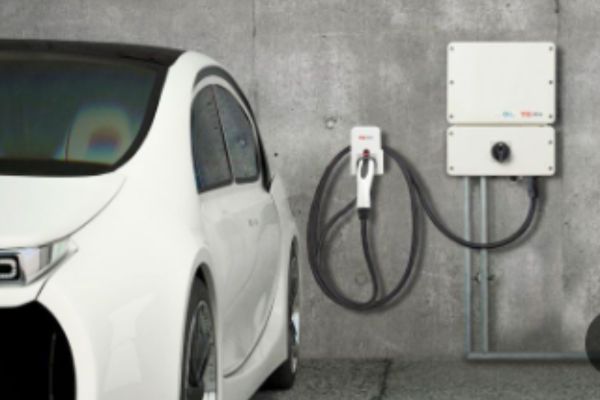
Installation and Usage
Ease of Installation
Installation was easy.
Both professional installers and DIY enthusiasts can easily install SolarEdge Smart EV Chargers due to their straightforward and hassle-free design. The chargers come with clear instructions and all the necessary components to facilitate a smooth setup process. Key aspects include:
- Pre-Configured Components: Many parts of the system are pre-configured, reducing installation time and complexity.
- Standard Connections: The use of standard electrical connections and mounting systems ensures compatibility with a wide range of solar setups and home electrical systems.
- Step-by-Step Guidance: Detailed manuals and online resources provide step-by-step instructions to guide installers through the process.
Helpful Tools for Installers
To further ease the installation process, a variety of tools and resources are available:
- Installation Apps: Specialized mobile apps provide real-time guidance, troubleshooting tips, and access to technical support.
- Online Tutorials: Video tutorials and webinars offer visual and interactive learning experiences to help installers understand and execute the installation steps.
- Access to dedicated technical support teams can help with any issues or questions that arise during installation.
- Installer Kits: Comprehensive installer kits include all necessary hardware and tools, minimizing the need for additional equipment.

User Interface and Control
Users will find convenience and flexibility in the user interface and control options of SolarEdge Smart EV Chargers.
- Start using Eco-Smart via MyWallbox. Users can easily initiate the Eco-Smart feature through the myWallbox app. This feature allows for intelligent energy management, optimizing charging schedules, and prioritizing renewable energy sources.
- Users can activate smart solar charging functionality within various mobile apps compatible with SolarEdge Smart EV Chargers. This feature enables the charger to intelligently adjust charging based on solar energy production, maximizing the use of clean and renewable energy sources.
Regulatory Compliance and Standards
Overview of Relevant Regulations and Standards
SolarEdge Smart EV Chargers adhere to a range of regulations and standards to ensure safety, reliability, and compliance with industry requirements.
- Safety Standards: Chargers comply with safety standards such as UL (Underwriters Laboratories) and CE (Conformité Européenne) to guarantee safe operation and protect users from electrical hazards.
- Performance Standards: To ensure optimal functionality and efficiency, chargers must meet performance standards set by organizations such as the International Electrotechnical Commission (IEC).
- Various EV models and charging infrastructure standards, such as SAE J1772 and CHAdeMO, are compatible with chargers.
Compliance with Local, State, and Federal Guidelines
Local, state, and federal regulations governing electrical installations, building codes, and environmental requirements guide the manufacture and installation of SolarEdge Smart EV Chargers.
- Installations follow local building codes and regulations related to electrical work, structural integrity, and zoning.
- Permitting: We follow proper permitting procedures to guarantee authorization and compliance with regulatory requirements for installations.
- Environmental Regulations: We carry out installations in accordance with environmental regulations to minimize ecological impact and ensure responsible disposal of materials.
Maintenance and upkeep
Routine maintenance requirements
To maintain optimal performance and safety, SolarEdge Smart EV Chargers require routine maintenance.
- Regular visual inspections of the charger and associated components are required to check for signs of wear, damage, or corrosion.
- Cleaning: The charger and solar panels should be cleaned to remove dirt, debris, and other contaminants that may affect performance.
- Electrical Checks: We perform routine electrical checks to ensure proper connections, grounding, and insulation integrity.
- Software Updates: Ensuring that the charger firmware and associated software are up-to-date to benefit from performance improvements and security patches.
We provide long-term care for solar panels and EV chargers.
We recommend the following practices for the long-term care and durability of solar panels and EV chargers:
- Scheduled Maintenance: Creating a routine maintenance schedule to prevent issues and extend equipment lifespans.
- Proactive Repairs: Promptly addressing any issues or malfunctions to prevent further damage and ensure uninterrupted operation.
- Professional Services: Engaging qualified professionals for complex maintenance tasks or repairs to ensure compliance with safety and quality standards.
- Documentation: Keeping comprehensive records of maintenance activities, repairs, and warranties for reference and accountability.

Additional products and services
Related Products
A well-designed solar EV charging system often incorporates additional components to optimize performance and functionality. Here are some examples:
Enphase IQ Combiner and Ensemble: These products streamline the connection and management of your solar panels. The combiner box safely combines the DC output from multiple solar panels, while the ensemble acts as a smart junction point for monitoring and optimizing your entire solar energy production system.
SolarEdge Backup Interface and Inverters: SolarEdge offers a variety of backup interface and inverter solutions that ensure seamless integration with your existing solar setup. This is particularly useful if you already have a solar photovoltaic (PV) system and want to add EV charging capabilities. Additionally, some SolarEdge inverters come with built-in backup power functionality, allowing you to power your home and charge your EV even during grid outages.
Upgrades and future proofing
Considering future needs and potential advancements is crucial for a long-lasting solar EV charging system.
Options for upgrading existing systems: Ensure your system can accommodate growth. Look for solutions that allow you to easily add more solar panels, batteries, or support new EV models as your requirements evolve. For example, choosing a modular solar charger allows you to add more charging outlets in the future.
Future-proofing for New Technological Advancements: Consider a system design with some flexibility to integrate with potential future innovations. This could involve selecting components that are compatible with evolving communication protocols or have the ability to receive firmware updates for future functionalities. While predicting the exact future of technology is difficult, choosing a system with some adaptability can help ensure your solar EV charging setup remains relevant for years to come.
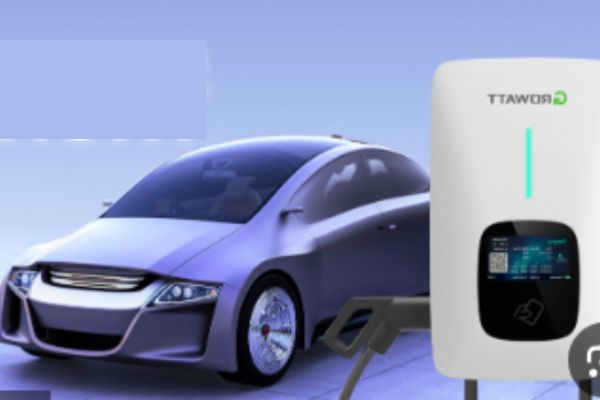
Partnerships and expansion
Partnership Opportunities
SolarEdge offers partnership opportunities for organizations looking to collaborate in the renewable energy sector:
- Become a Solar Partner: Organizations can join SolarEdge’s network of solar partners to access exclusive benefits, resources, and support. This partnership provides opportunities for collaboration, business growth, and market expansion in the solar energy industry.
- SolarEdge Collaboration: SolarEdge works with TotalEnergies, a global energy company, to explore synergies and drive innovation in renewable energy solutions. This collaboration leverages the expertise and resources of both companies to accelerate the adoption of solar power and sustainable energy practices.
Research and development
SolarEdge is committed to advancing renewable energy technologies through research and development initiatives.
- SolarEdge collaborates on R&D projects with research institutions, universities, and industry partners to develop cutting-edge solutions for the renewable energy sector. These collaborations foster innovation and drive progress in solar power, energy storage, and smart grid technologies.
- Future Technologies in the Pipeline: SolarEdge is continuously investing in the development of future technologies to improve solar energy systems’ performance, efficiency, and reliability. These technologies include advancements in solar panel efficiency, energy storage solutions, grid integration, and smart energy management.

Customer engagement and outreach
Contact and customer interaction
SolarEdge encourages customer interaction and provides multiple channels for communication and support:
- Customers can contact SolarEdge through various channels, including phone, email, and online contact forms, to inquire about the Solar Bundle and receive assistance with their solar energy needs.
- Discover Our Compatible Charging Solutions: SolarEdge offers compatible charging solutions for electric vehicles, and customers can explore these options through the SolarEdge website or by contacting customer support for personalized recommendations.
Case Studies and Success Stories
To demonstrate the effectiveness of its products and solutions, SolarEdge showcases examples of successful installations:
- Examples of Successful Installations: SolarEdge provides case studies highlighting real-world installations of its products, showcasing their performance, reliability, and impact on energy efficiency.
- Testimonials and Feedback from Users: Through testimonials, customers share their experiences and feedback, providing insights into the benefits and satisfaction of using SolarEdge products and solutions.

Law and Compliance
Privacy and data usage
SolarEdge prioritizes the privacy and security of its customers’ data.
- We Value Your Privacy: SolarEdge is committed to protecting its customers’ privacy and adheres to strict privacy policies and regulations.
- SolarEdge may use cookies to improve the user experience and provide personalized content on this website. Users can manage cookie preferences through browser settings.
Incentives and subsidies
SolarEdge offers information on government and local incentives for solar electric vehicle charging.
- Government or Local Incentives for Solar EV Charging: SolarEdge offers resources to help customers identify available incentives and subsidies for installing solar EV charging systems.
- How can I apply for and benefit from these incentives? SolarEdge assists customers in navigating the application process for incentives and subsidies, ensuring they can maximize savings and benefits.

Market Analysis
Current market trends
The adoption of solar EV charging is on the rise.
The adoption of solar EV charging is witnessing a number of notable trends:
- Increasing Environmental Awareness: Growing concern about climate change and environmental sustainability is driving more consumers to embrace solar EV charging as a clean and renewable energy solution.
- Rising Demand for Electric Vehicles: The increasing popularity of electric vehicles (EVs) is driving demand for associated charging infrastructure, including solar-powered charging stations, as consumers seek to reduce their carbon footprint and lower their reliance on fossil fuels.
- Integration with Smart Home Systems: Smart home technologies are increasingly integrating with solar EV charging systems, enabling seamless monitoring, control, and optimization of charging schedules based on solar energy production and grid demand.
- Expansion of Government Incentives: Government incentives and subsidies for renewable energy and electric vehicles continue to support the growth of the solar EV charging market, making installations more financially attractive for consumers and businesses.
Competitive Landscape and Market Leaders
In the competitive landscape of solar EV charging, several companies have emerged as market leaders:
- SolarEdge: SolarEdge is a prominent player in the solar energy sector, offering a range of innovative solutions, including smart EV chargers that integrate seamlessly with solar power systems.
- Enphase Energy is another key player known for its advanced microinverter technology and smart energy management solutions, which include compatible EV charging options.
- Tesla: Tesla, known for its electric vehicles, also offers solar energy products, including solar panels and the Tesla Wall Connector for EV charging, positioning the company as a significant competitor in the solar EV charging market.
These market leaders and other players are driving innovation, expanding product offerings, and competing for market share as the demand for solar EV charging continues to grow.

Challenges and barriers
The Market’s Current Challenges
The solar EV charging market faces several obstacles to widespread adoption:
- High Initial Costs: For many consumers, the upfront cost of installing solar panels and EV charging infrastructure can be prohibitive, deterring them from investing in solar EV charging systems.
- Grid Integration Complexity: Integrating solar EV charging systems with the existing electrical grid presents technical challenges, such as managing energy flow, grid stability, and compatibility with grid infrastructure.
- Regulatory Hurdles: Regulatory barriers, including complex permitting processes, interconnection requirements, and zoning regulations, can delay installations and increase administrative burdens for both consumers and installers.
Strategies for overcoming these barriers
To address these challenges and promote the widespread adoption of solar EV charging, stakeholders can implement the following strategies:
- Cost Reduction Initiatives: Continued innovation and technological advancements can drive down the cost of solar panels, EV chargers, and associated components, making solar EV charging more affordable for consumers. Additionally, financial incentives and rebates can help offset initial costs and encourage investment in solar EV charging systems.
- Collaboration with utilities and grid operators to develop standardized protocols and solutions for grid integration can streamline the installation process and ensure compatibility with existing grid infrastructure. Smart grid technologies, such as demand response programs and grid-interactive inverters, can help optimize energy flow and enhance grid stability.
- Advocacy and Policy Engagement: Working with policymakers and regulators to streamline permitting processes, clarify interconnection requirements, and remove regulatory barriers can facilitate the deployment of solar EV charging infrastructure. Advocacy efforts to expand incentives, tax credits, and funding opportunities for solar EV charging can also incentivize adoption and drive market growth.
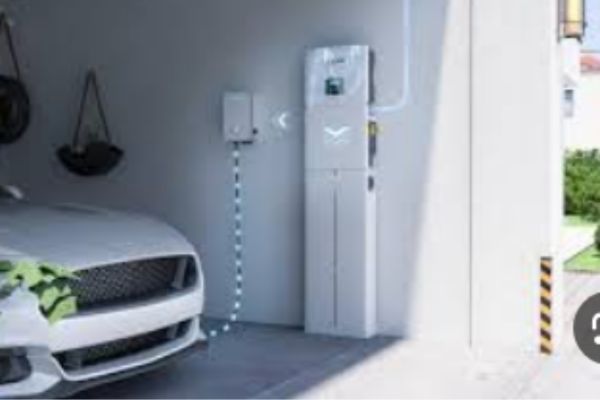
Future Outlook
Technological innovations are on the horizon
Technological innovations, particularly in the integration of solar energy and smarter, more efficient systems, are poised to revolutionize the future of EV charging. We are on the cusp of seeing enhanced battery storage solutions and solar panel technologies that can significantly reduce charge time and increase convenience for users.
Innovations like bi-directional charging will also allow EVs to not only take energy from the grid but supply it back during peak times, which could revolutionize energy management systems.
Emerging Technologies in Solar and EV Charging
We anticipate advancements in solar technology, particularly in the efficiency of photovoltaic cells and the integration of these systems with smart chargers that automatically optimize charging times based on energy production and demand patterns.
Moreover, the advent of transparent solar panels could enable a broader application of photovoltaics to everyday objects, potentially transforming windows and even car surfaces into energy-generating entities.
Market growth predictions
Experts anticipate exponential growth in the market for smart EV chargers, especially those that integrate solar technologies. The global push towards sustainability, governmental incentives to adopt cleaner technologies, and advancements in EV and solar technology, which make these options more accessible and cost-effective, will fuel this growth.
As awareness of the environmental impacts of fossil fuels grows and the total cost of ownership of EVs continues to decline relative to traditional vehicles, we also predict a rise in consumer demand.
Market Predictions Based on Current Trends and External Factors
Taking into account current trends and external factors such as policy changes, economic incentives, and technological advancements, the smart EV charger market is likely to see a robust expansion. Urban planning and smart city development will continue to drive the adoption of these technologies.
Additionally, as more automakers commit to electrifying their fleets, the infrastructure for EV charging will expand, creating a virtuous cycle of growth. However, this market’s expansion might face challenges such as raw material scarcity and the need for substantial initial investments in infrastructure.
Overall, due to rapid technological advancements and robust market growth, the outlook for the smart EV charger and solar charging market is positive. These developments will play a crucial role in shaping a sustainable automotive future, making the next decade an exciting period for both technology enthusiasts and environmental advocates.

Henry Michael is a leading expert in EV charging station research, specializing in innovative solutions for electric vehicle infrastructure. With a passion for sustainability and technological advancement, he is dedicated to advancing the accessibility and efficiency of EV charging worldwide.
